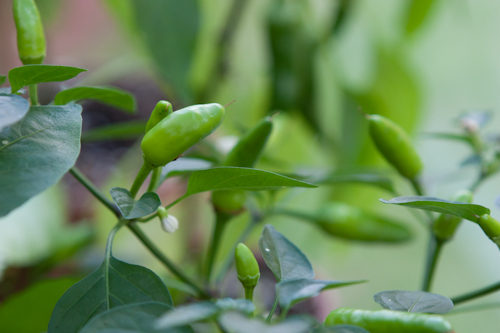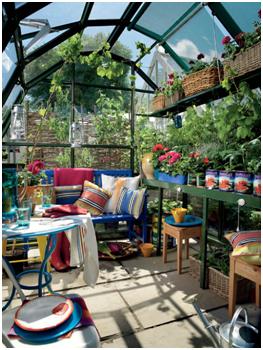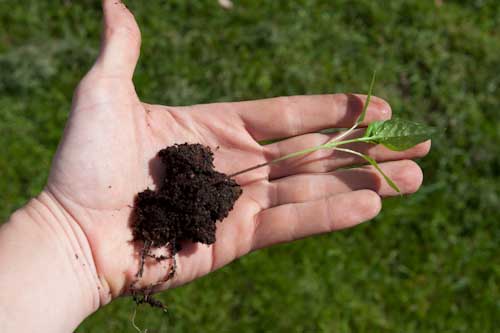Back in April I talked about how some Super Chilli F1 seedling got badly scorched after I left the propagator they were in on a sunny windowsill on a particularly hot day. Seedlings that are so small are incredibly susceptible to a change in their environment as i found out to my cost.
[ad name=”square”]
As you can see from the pictures on the original post the seed leaves were burnt off the seedlings all together and as a result I was pretty sure they would not survive.
After re-potting them I put them under my grow lights in the hope they’d recover. Well, four months on and I’m glad to report that the plants have made a remarkable recovery. As you can see in the picture below both of the plants are now bursting with fruit and looking incredibly healthy.

Although the fruit are not quite ripe i tried one last night and am glad to report the chillies pack quite a punch. Not only this but they look about the healthiest of all of my plants!
This goes to show that you should never give up on chilli plants that appear to be beyond saving. In fact the same thing happened with one of the Scotch Bonnet plants I over wintered. Chilli plants are incredibly resiliant. I’ve heard a few people say that pepper plants like to be ill treated. I think this is evidence that it is true.
Chillies With No Heat?
From time to time i hear of people being upset when chillies they’ve grown contain no heat at all. One reason often quoted is over watering. Some say that if you treat a chilli plant mean and only water it when really dry then the heat within the fruit intensifies. I’ve not seen any conclusive evidence that reducing watering increases heat but feel it may have an effect.
What do you think – does watering affect the heat in the chillies the plant produces? Leave a comment below.
Now we all know that chillies like a little bit of warmth to start that first germination process – seeds can be sown in March indoors to start them off – but if you have a glasshouse the seeds can be sown in pots that are positioned right where you want the plants to grow. Sowing chilli seeds in the glasshouse is an easy way to ensure that the plants start off with the right amount of heat, especially if the greenhouse has a built in heating system. Heating systems are available for most greenhouses and are generally installed as standard with more bespoke glasshouses.
Why Grow Chillies in Glasshouses?
Chillies grown in glasshouses tend to produce bumper crops of peppers once the temperature and moisture levels in the glasshouse are regulated. It was the Victorian’s that first designed glasshouses to grow exotic plants that had been brought back to England by the ‘plant hunters’. Originally Victorian glasshouses were made with a lead frame and the early growers used arsenic to prevent pest infestations (the glasshouses were not a healthy place to work or to grow plants!). Hartley Botanic is one company that has been manufacturing greenhouses in the traditional style since 1938.
The chilli pepper was brought to Europe following Columbus’s expeditions and has been part of the European diet since 1493. Later the Victorian’s liked to grow chillies in their glasshouses and originally used the peppers as an alternative to black pepper to spice up their food. There are some great examples of chilli plants in the West Dean Victorian Glasshouses – they have been grown there for many years and attract a great number of visitors each August when the West Dean Chilli Fiesta is held.
West Dean Chilli Fiesta
The West Dean Chilli Fiesta started off as a kind of open day for people to see the magnificent chilli plants in the great Victorian glasshouses but now attracts over twenty thousand visitors. Chillies have been grown at the West Dean Victorian Glasshouse since 1990 and Sarah Wain who is responsible for the fantastic display of plants explains that in the early days she decided to use an empty Victorian glasshouse to grow a few chilli plants. Originally there were only a very small number of seeds available to purchase nationally and therefore plant exhibits were few in number – she is now proud to explain that over 300 chilli varieties are on display and that the seeds for the plants are available quite readily these days in the UK.

(Pic Courtesy of West Dean)
The Chilli Fiesta 2011 will be held on the 5th, 6th and 7th of August and the West Dean team are claiming it will be the best ever and will give visitors the chance to see the spectacular display of chillies in the Victorian glasshouse but also experience everything Chilli – there will be hot and fiery chilli food on sale, fine examples of chilli inspired pottery and other pieces and live performances from Mexican Minstrels.
The Chilli Fiesta will be a great chance for visitors to see a remarkable example of successful chilli growing in the wonderful setting of a Victorian Glasshouse and should provide novice growers with inspiration to enable them to grow chillies successfully too.
For more information regarding the Chilli Fiesta and to book tickets contact: http://www.westdean.org.uk/Events/GardenEvents/ChilliFiesta.aspx. It is sure to be a great day out for any chilli lover.
Chillies are and will remain a very popular species to grow in the greenhouse – growing chillies in these structures, whether a standard glasshouse, an elaborate Victorian glasshouse or one of the more bespoke glasshouses is quite easy and in doing so the plants produce abundant crops of the gorgeous pepper.
Following on from my last post here is another reader question (From James) regarding leggy chilli seedlings and grow lights.
Question
I started some some plants from seed. They took a couple weeks to germinate but they finally came up. the sun is too hot outside for the little seedlings so I put them under a grow light I bought at Home Depot. It is a Phillips incandescent bulb and I put it in a desk lamp and shined it down on the seedlings. About a week or two later the seedling have grown dramatically but they are all stems and have not even begun to show true leaves even though they are 3-4 inches tall. Is this normal?
 Is this seedling leggy?
Is this seedling leggy?
I have seen pictures of much smaller plants that have at least two sets of true leaves and are have the size. I was thinking maybe the light frequency is wrong and should change lights. What are you thoughts?
Answer
There are a couple of points i’d like to discuss that are brought up by your question.
First of all I’ve noticed that different varieties of chillies tend to produce very different shaped plants, even at a very early stage of growth. The picture above is of a Cayenne seedling which always tend to be a bit leggy, no matter how much light they receive. At the other end of the scale varieties such as Naga or Jolokia produce very compact seedlings that focus their early growth on foliage production rather than putting on height. Therefore much will depend on which variety you are growing.
You mention that you are using incandescent bulbs. While they can be used to promote growth in the early stages the big downside of these bulbs is the large amounts of heat they produce. To be very effective they need to be very close to the plants, usually so close that the delicate seedlings end up getting scorched or damaged. By far the best type of lights to use for young chilli plants are Compact Fluorescent Bulbs as they output very little heat.
[ad name=”square”]
OK, so if your seedlings are a bit leggy what can you do? Recently I talked about the best ways to pot on chilli plants and mentioned that if plants are slightly leggy you can simply plant them a bit deeper when re-potting them. Doing so will encourage more roots to sprout from the buried part of the stem, making a stronger healthier plant in the long term.









